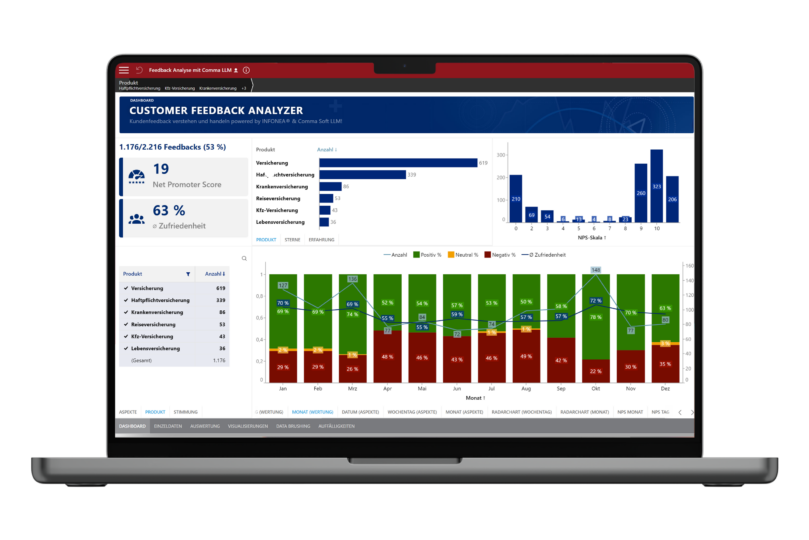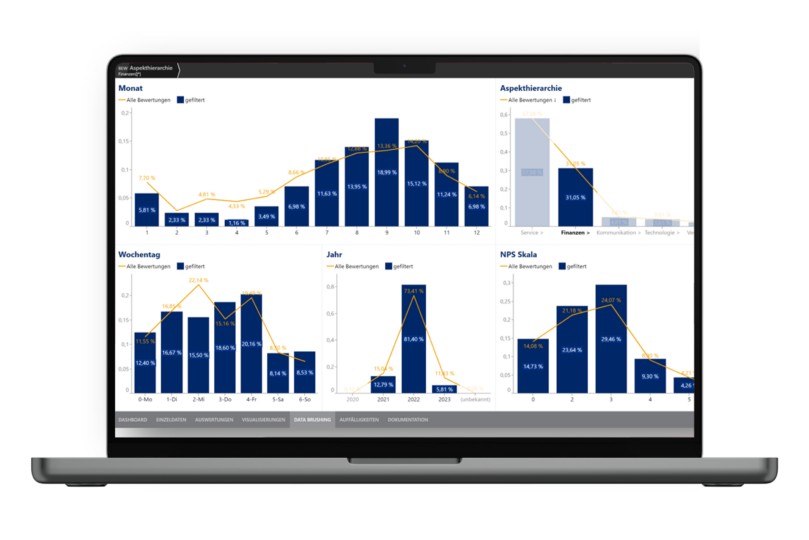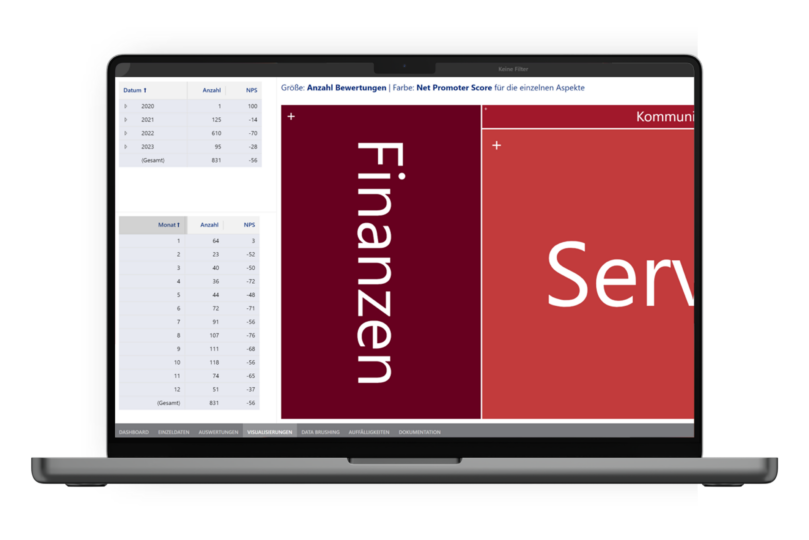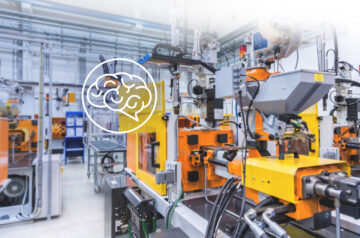
Next Level Sentiment: evaluating customer feedback across all channels in seconds
How highly do customers rate the service? Do they receive answers to their queries quickly enough? Are they satisfied with the service team’s friendliness? What do they say about the price-performance ratio of the products and services? Many companies are keen to use these kinds of insights to improve their offering or plan the appropriate strategic initiatives. But how do they come by these ratings? One method is the use of customer surveys, which can be sent by email after a service has been provided or can be completed directly after a campaign on the website or in the customer portal using an online form. Proactive feedback is also provided directly to the company – via all available communication channels – or in external forums. Now the challenge lies in collecting and evaluating customer feedback across all of these channels – a time-consuming and tedious procedure when done manually. Things move much faster when the power of the new GenAI tools is combined with that of business intelligence (BI) platforms such as INFONEA®.
Step 1: Read feedback and ratings with generative AI
Let’s take an insurer with several million customers as an example. In this field, contact with policyholders alone generates a great deal of feedback. The ratings in public forums and on rating platforms contain thousands of additional customer testimonials. The data records from external and internal sources can be read and clustered by a GenAI tool, e.g. ChatGPT, using a large language model (LLM). For this purpose, it is trained in advance with prompts and data so that it recognizes ratings as such and can classify them according to the degree of satisfaction. It also recognizes certain key terms on topics such as “price”, “refund”, “invoices”, “service center” or “communication”.
At this stage, employees can already ask the GenAI tool for an opinion on certain topics and have the average customer feedback or particularly positive or negative customer experiences displayed.
Step 2: Clear visualization of customer feedback with BI
The general impression on its own does not help much when it comes to improving service and products. For this, the insurer needs specific data and dependencies from our example. INFONEA visualizes precisely this. In the dashboard, employees will then be able to see, for example:
- Time dependencies: In which months and on which days of the week is the feedback more positive or more negative? In the fall, for example, when car insurance policies are being calculated, customer feedback on prices tends to be more critical. Deviations may also occur on certain days or at certain times, e.g. if the service hotline is understaffed at these times and there are longer waiting times. The insurer can then react to such anomalies and, for example, increase staff or implement temporary customer loyalty programs.
- Quality of service: Are there certain communication channels that customers criticize? This could be the newly introduced service app or the outdated online portal, for example. Here too, the insurer receives transparent feedback on which adjustments can be made to improve policyholder satisfaction and take their preferences into account.
- Product evaluation: Do the products fulfill the requirements of the policyholders? What are they lacking, what is possibly superfluous? Feedback on these points can be utilized to further develop products, expand the portfolio and even discover new market segments and business models.
The interesting thing about the connection between INFONEA and a GenAI tool is that the respective sources can be called up and visualized as concrete evidence. If you only use a third-party generative AI solution such as ChatGPT, the sources are not easily traceable. However, this may be necessary in order to justify cost-intensive measures derived from customer feedback, for example.
Step 3: Creating a catalog of measures with BI and GenAI
What concrete steps can be taken following these analyses? This is another area where INFONEA can help in conjunction with GenAI. Generative AI can make recommendations for suitable strategic measures, such as the use of chat and voice bots or the targeted training of service personnel. In turn, these measures can be visualized with INFONEA, e.g. according to their impact, the associated costs and their effectiveness in the long and short term.
Other use cases of this approach in industries other than insurance and e-commerce are:
- Pharmacovigilance: Side effects and (in)tolerability of medication can be identified from posts in suitable online forums.
- Clinical studies: Feedback from participants in clinical trials can deliver valuable insights into the causes behind drop-outs and thus improve the success of clinical trials in the long term.
- Employer branding and retention: Reviews on employer portals can provide information on how to increase employee satisfaction and therefore reduce staff turnover.
Ensuring data protection when using GenAI
When it comes to the use of internal customer data and the inclusion of partner portals, special requirements apply depending on the company, especially in regulated industries. We would therefore recommend that you coordinate with your partners about which external data may be used and how. An in-house generative AI solution can also be a sensible alternative to a public GenAI tool when it comes to meeting compliance and regulatory requirements.
If you have any questions or would like to discuss the potential applications of INFONEA and generative AI in your company, please do not hesitate to contact us!













